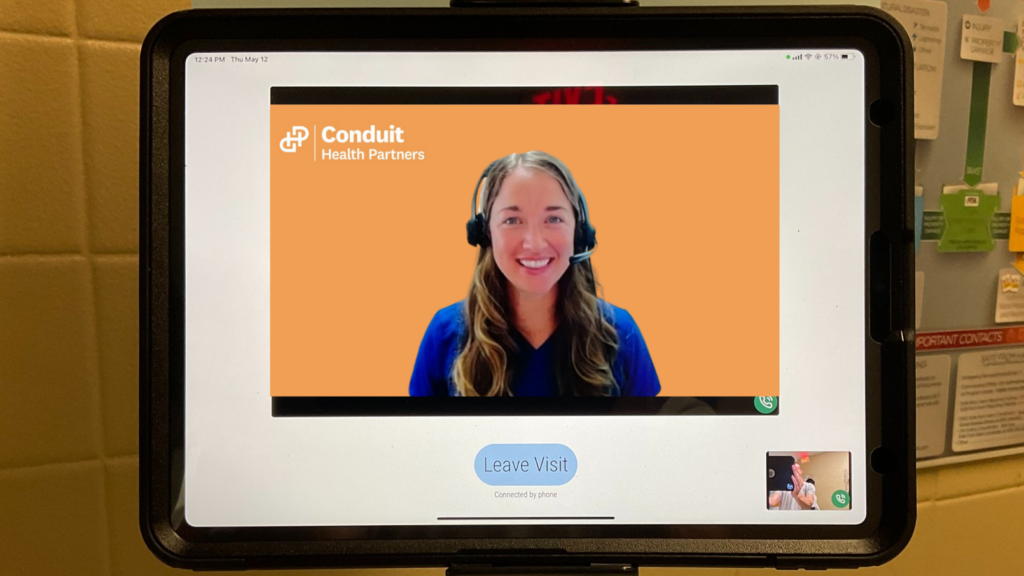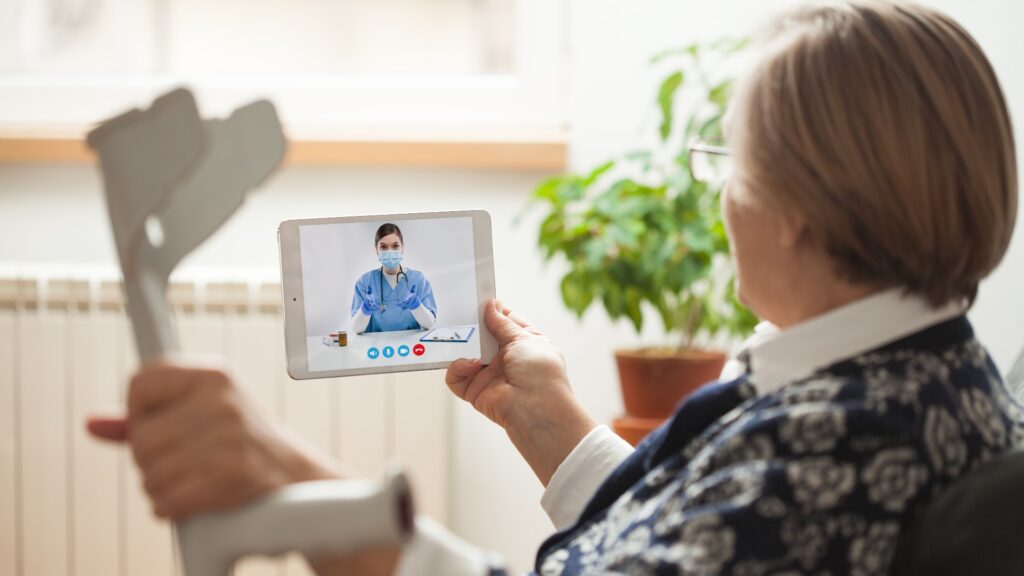Conduit Health Partners and Unity Care NW Offer Nurse Triage Services to FQHC Residents in Washington State

Conduit’s solution to address Unity Care NW staffing shortages, streamline patient care, relieve on-call teams
CINCINNATI, Ohio – Unity Care NW (UCNW) is launching a 24/7 nurse triage service in collaboration with Conduit Health Partners for residents of northwest Washington communities serviced by a Federally Qualified Health Center (FQHC). This expansion of access to quality health care, which is slated to begin in Jan. 2023, connects FQHC residents to experienced registered nurses to listen to every caller’s needs and offer timely clinical expertise, » Read more about: Conduit Health Partners and Unity Care NW Offer Nurse Triage Services to FQHC Residents in Washington State »
Conduit’s Kris LaHote rappels off a 16-story building to help others with cancer

When Kris LaHote, PMP, Manager of the Program Management Office for Conduit Health Partners, was diagnosed with breast cancer for the second time, she believed she could either say “Why me?” or seek something good that might come out of it.
Conduit Health Partners Client Testimonials

Are you interested in partnering with Conduit Health Partners for transfer center services but want to hear what other clients have said about our services? View our most recent video where four health care executives outline their experience and results working with Conduit for Patient Transfer Center services.
Optimize Transfer Center Practices to Improve Patient Acquisition Whitepaper

Health care is changing. Fast. But one constant remains — the challenge of managing the flow of patients in and out of your hospital or health system.
Even before COVID-19, patient transfers were problematic for most hospitals and health systems. Then, the pandemic added more strain. Finding the best way to handle patient flow has become increasingly difficult, with higher patient volumes and staff shortages.
Conduit Health Partners Featured on Becker’s Hospital Review

Recently, Becker’s Hospital Review touched upon the pain point of health care access and patient transfers. Calling for a new approach to patient transfer, Becker’s Hospital Review recently posted an article about how industry leaders, including Conduit, had a discussion about how healthcare organizations can optimize transfer services with a data-driven approach and technology to retain patients and inspire growth.
Conduit Health Partners featured on NBC15 in Wisconsin for Nurse-First Triage Services Offered to Individuals Experiencing Homelessness

One of the goals behind the creation of Conduit Health Partners was to improve access to care for all populations of people. With our partners Nurse Disrupted and The Salvation Army we have come closer to that goal. Through our 24/7 Nurse-First Triage service, Conduit Health Partners is providing 24/7 nursing services to homeless shelters.
Strategies to Reduce Unnecessary Emergency Room Visits

Unnecessary ER visits cost the healthcare industry at least $47 billion per year, according to a report from Accenture consulting firm (2021). The report cites patients with “low health system literacy” as one key cause of excessive ER visits. The complexity of today’s health system drives patients to the ER for acute needs that could be addressed in less expensive health settings, according to the report.
In addition to their negative impact to a hospital’s bottom line, excessive ER visits also put additional strain on clinical and support staff, while diverting valuable resources from patients experiencing serious health crises which truly require emergency care.
Remote Patient Monitoring Programs Aim to Reduce Readmission Rates

Spurred by the COVID-19 crisis, nursing shortages and the incentive to avoid penalties, the industry became more innovative. Remote Patient Monitoring (RPM) programs pair wearable devices with telehealth response capability. These programs provide frequent patient monitoring without requiring in-person visits and tests – a capability that is especially important for those who live in remote areas, those with chronic conditions and those transitioning from hospital to home. Medical professionals can evaluate daily reports and reach out to those patients with immediate issues.
Using Data to Drive Patient Acquisition, Retention and Growth

An innovator in the health care space, Conduit Health Partners’ use of data is a driving factor in helping to determine the correct type of care each patient should receive, when they should receive it, if that care is best delivered in the hospital or at home, and how that care will impact the bottom line for both the health care services provider and the patient.
Conduit Addresses the Nursing Shortage

The Great Resignation has led to millions of Americans re-evaluating their jobs and trying to find what they want in life. Nurses are at the top of this list. Nursing turnover has never been higher. Engagement and retention for nurses are incredibly important. Leaders at Conduit are actively creating solutions to increase the sense of belonging and job satisfaction that are the building blocks of keeping valuable and talented nurses on our teams.